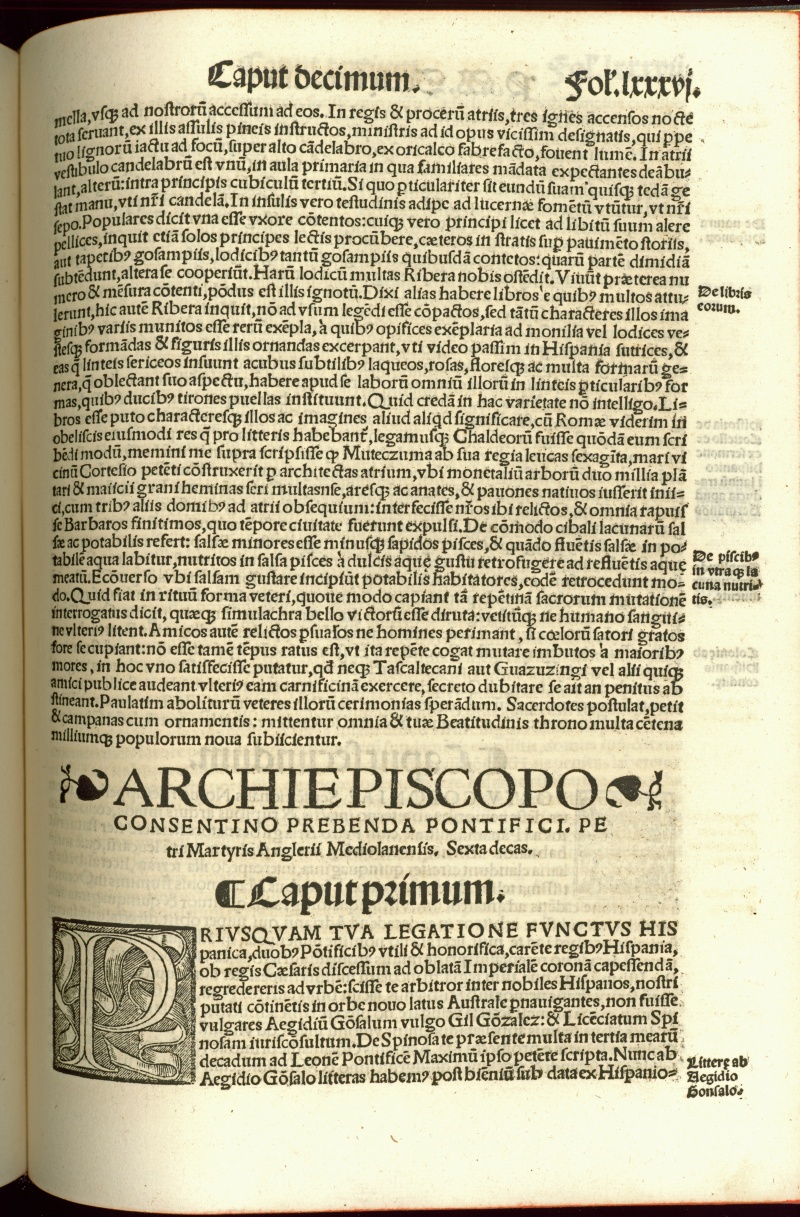Europeans Invade the Aztec Empire

Pietro Martire d'Anghiera
De Orbe Nouo Decades
Alcalá de Henares, Spain: Miguel de Eguía, 1530
In 1522, the Italian humanist Pietro Martire d’Anghiera invited Juan de Ribera, Cortés's envoy from Mexico, to a gathering at his home. Meeting with a group of politically connected men from the Vatican, Venice, and Milan, Ribera answered questions about the indigenous civilization and showed them jewelry, crafts, clothing, maps, and other pictorial manuscripts. An Indian youngster demonstrated indigenous customs, performing military combat and courtly dances, and demonstrating ritual inebriation.
In 1530, d'Anghiera published De Orbe Nouo Decades. Based on Ribera’s report, the examination of indigenous items, and the Nahua boy’s performance, the book was the first serious depiction of Aztec civilization presented to European audiences.
TRANSLATION OF TRANSCRIPT FROM DE ORBE NOUO DECADES [ABOVE]
Among the maps of their land, we truly examined one that was thirty feet long, a little smaller in width, made of white woven cotton, in which all the plains with their provinces, both enemy and friendly to Motecuhzoma, were extensively inscribed. It shows at the same time vast mountains enclosing the plains all around and also the southern coasts, from whose inhabitants we heard that there are islands close to those shores where, as we said before, they grow great amounts of spices, gold and gems.
In those hills the inhabitants' accounts say there are wild men, shaggy as the furry bears of mountain dens and satisfied with filthy foods born in the earth or game. After the larger map, we saw another a little smaller, but with no less enthusiasm on our part, the very city of Tenochtitlan with its temples and bridges and surrounding lakes painted by indigenous hand. After this, [Ribera] had an indigenous youngster equipped as a warrior, whom he brought as his servant, come out from my room to the open terrace where we sat.
Newberry Library: Vault Ayer 111 .A5 1530